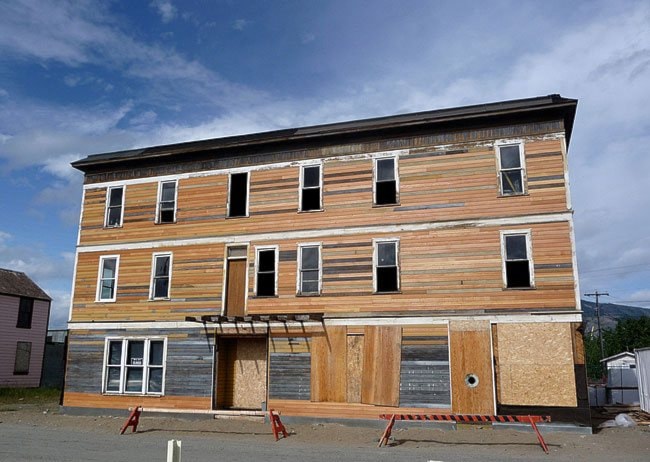By Teresa Earle
Special to the News
What do business mix, landscaping plans and profit margins have to do with heritage? According to restoration architect François Varin: everything.
“Heritage conservation is as important as economic vitality or a good social and cultural life in a community,” says the director of Quebec-based Fondation Rues principales, an organization that works with Canadian municipalities to create revitalization strategies. “Everything is linked. It’s not heritage conservation facing off with economics. It’s everything working together.”
Fondation Rues principales is grounded in the Main Street Approach, a movement that took hold in the 1980s and has gained momentum over three decades as communities across North America grappled with downtown decay. Though economic and social concerns are usually top of mind in these depressed towns, heritage organizations have frequently been the agents of change helping to usher in new strategies to address a broad spectrum of community ailments.
In the late 1970s, the National Trust for Historic Preservation in the United States was swamped with calls for help from cities whose downtowns were being devastated by rampant suburban growth and a glut of retail space in large, isolated malls.
“There seemed to be no coherent vision of downtown revitalization as a process,” says Mary Means, a former director with the National Trust and one of the founders of the Main Street movement. “Although confident of our knowledge of historic architecture, adaptive use and preservation, we knew little about small business practices, job creation and other issues that are part of a revitalization process.”
The National Trust created a demonstration project in three small Midwest communities that would not only preserve the towns’ heritage but also revive their economies. “The message was really clear,” says Means. “Downtown was not the responsibility solely of merchants or city hall. Downtown belonged to everyone, and the entire town had a stake.”
In the 1980s, the Heritage Canada Foundation began to implement the Main Street Approach in many communities across Canada. The Fondation Rues principales has been working on revitalization projects in Quebec since 1997, though some of the more than 200 municipalities that the Fondation has worked with are outside of the province.
“We work with any size of municipality from large to small to neighbourhoods,” says Varin. “The size can differ but often the problems are the same: buildings are not well-maintained and people want to tear them down, it’s a badly landscaped environment, there’s no public space, no vegetation on the street. We show them that quality of life is very important and goes with a vibrant economy.”
The communities are often dealing with bankrupting businesses, high vacancy rates, crime and other symptoms of a deteriorating commercial district. One of the Fondation’s first tasks is to convince people that their heritage is the best tool for them to boost sales and create a more livable community.
“We can link preservation with economics,” Varin says. “Heritage is no longer something we keep just because we think it’s important or because it’s our culture. Heritage is the keystone of any revitalization project we’re working on.”
“Each community has its own characteristic identity, and we need to base revitalization on these assets,” he says. “We work with elected officials, business people, partners and stakeholders to develop a common vision and strategies for the community.”
And what’s in the toolbox of a restoration architect who works on community revitalization projects?
Organizations like Fondation Rues principales draw from the same arsenal as any developer including market studies, surveys, statistics, testimonials and drawings. The process also involves considerable research and soul-searching as people rediscover their history, identify community assets and figure out what sets them apart.
In many respects the Main Street Approach embodies the principles of sustainable development, making the best matches between existing buildings, community needs, the environment and the local economy. In creating healthier, more sustainable communities, it fosters benefits that far exceed the heritage value of preserving special places.
“In healthy communities, people are proud of their town. They have a sense of belonging that relates to roots and traditions and where they come from,” says Varin. “A built environment that is convivial and inviting encourages people to stay in their town.”
Heritage-driven revitalization strategies have now become main stream with thousands of communities across North America initiating municipal programs to spur economic development and create more dynamic downtowns and neighbourhoods. Saving a few old buildings may have been a catalyst for the movement, but in the process people have discovered the immeasurable value of built heritage.
“The results of any of these processes is saving our built environment, improving the quality of life, giving people more pride, having more people involved in social and cultural activities, more active employees, more businesses,” says Varin.
“We say that built heritage is as important to mental health as clean water is good for our physical health.”
For more information on Yukon’s historic places, please go to true.
This article is part of a series produced by the Yukon Department of Tourism and Culture with the support of the government of Canada, Historic
Places Initiative.
